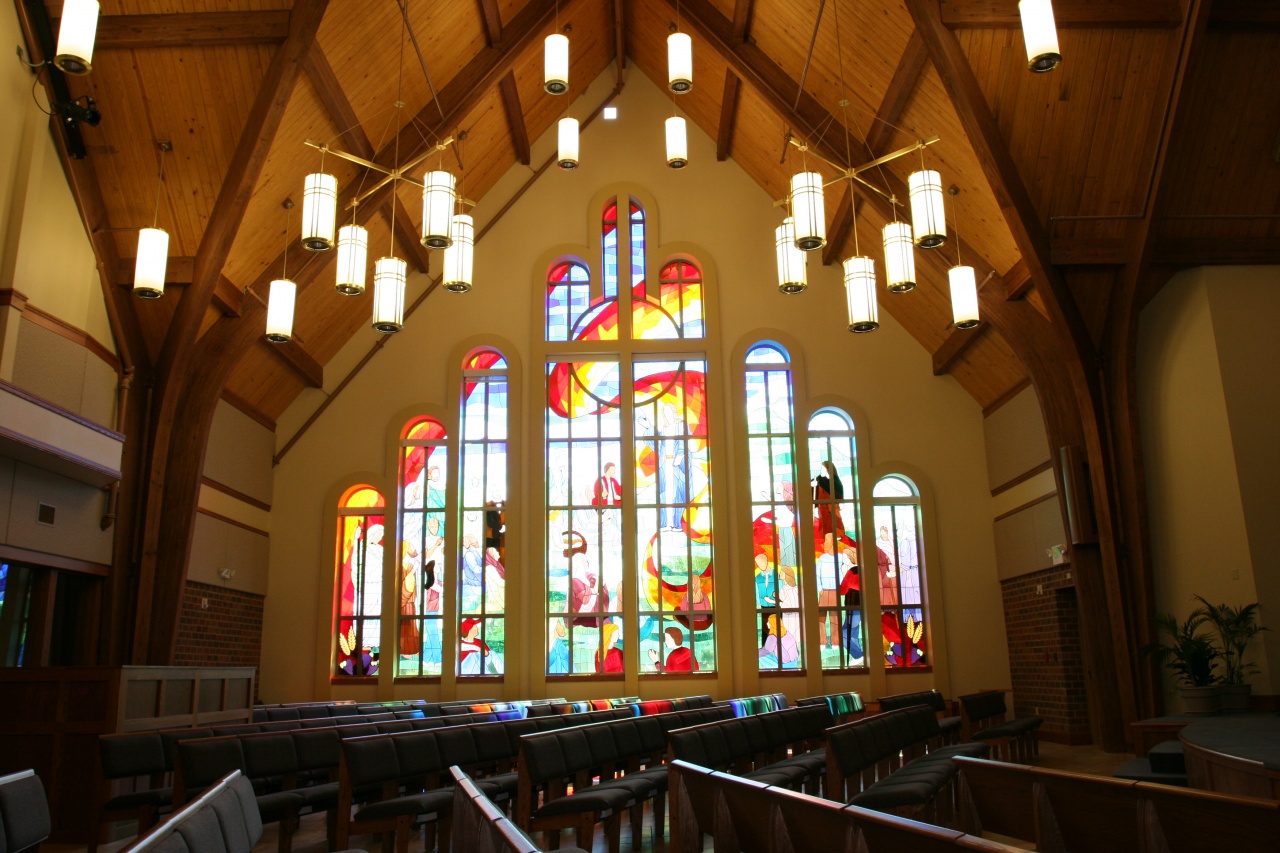

The Wisconsin Evangelical Lutheran Synod (WELS) has had a presence on the University of Wisconsin-Madison campus since 1920, when the university’s enrollment was just 7,000; today the university boasts more than 40,000 students.
By the early 2000s, the synod’s 1960s facilities near State Street were limiting student ministry, and leadership was concerned about long-term maintenance. Several building committee members were familiar with NCI-Roberts Construction’s work in the worship space, and engaged the firm to help them explore their options.
The City of Madison denied initial plans to tear down two houses adjacent to the current property, so NCI-Roberts developed a second plan to tear down the existing church and rebuild in the same location. Luckily, a building next door had vacant space – plus parking – for the church to rent during the year-long project.
The church’s majority student membership couldn’t support a mortgage payment, so the church set – and met – a goal to raise all of the building funds up front.
A somewhat limited site required creative design to accommodate as much parking and square footage as possible. Once construction began, that maximum site use plus heavy automobile, bicycle and pedestrian traffic made public safety logistically complicated.
The facility design was based on Wartburg Castle, built in Germany in the Middle Ages. The traditional upright design incorporates turrets and large stained-glass windows.
Because of the maintenance challenges of the previous facility, the building committee and NCI-Roberts worked hard to minimize future operating and maintenance costs with efficient mechanical and electric systems and windows, supplementary thermal insulation, and durable finishes.
Additional features of the chapel and student center include:
The congregation, staff and greater student body makes use of the new facility 24 hours a day, 7 days a week, appreciating scheduled worship and programming as well as informal “hangout” space.
The structure was designed to accommodate an additional floor, allowing for accommodation of continued growth without having to repeat the relocation and construction process.
Check out another case study or view more projects.